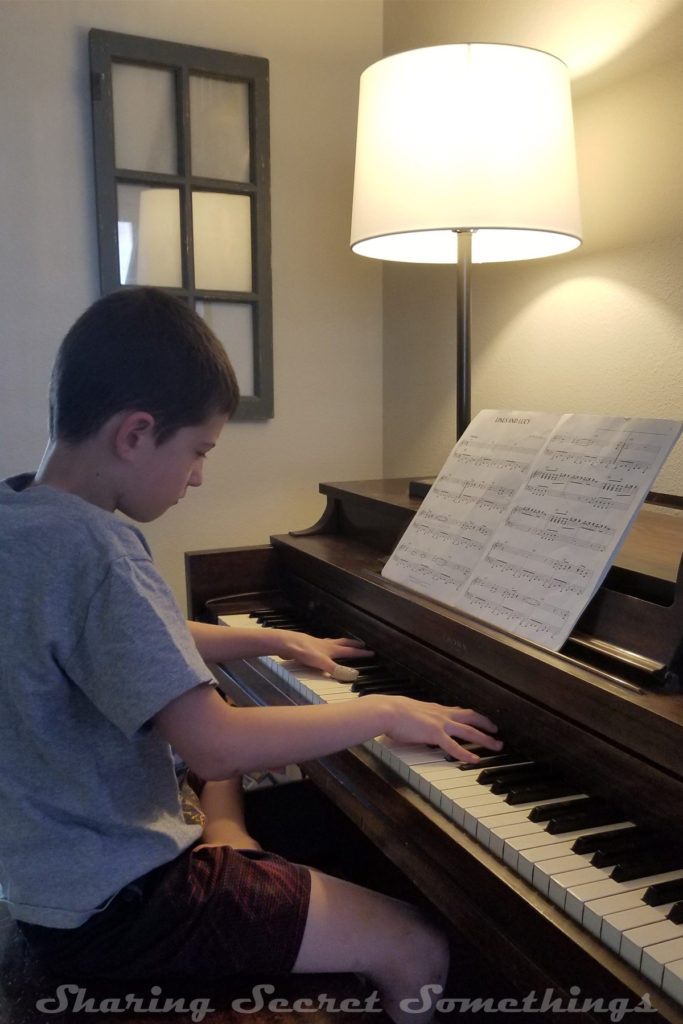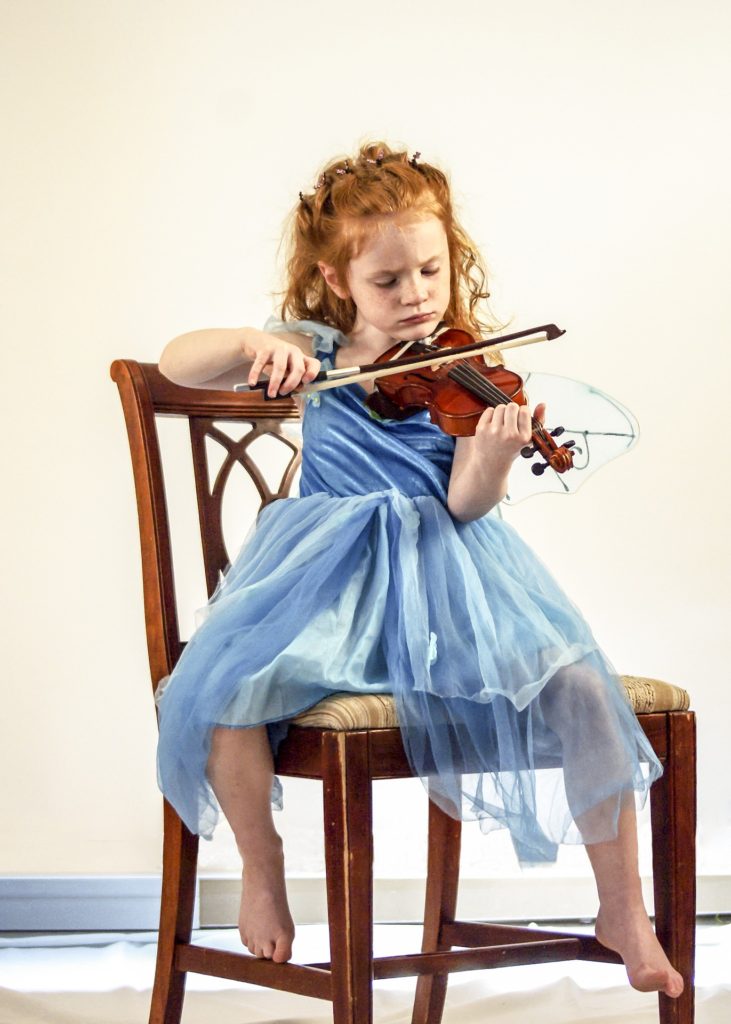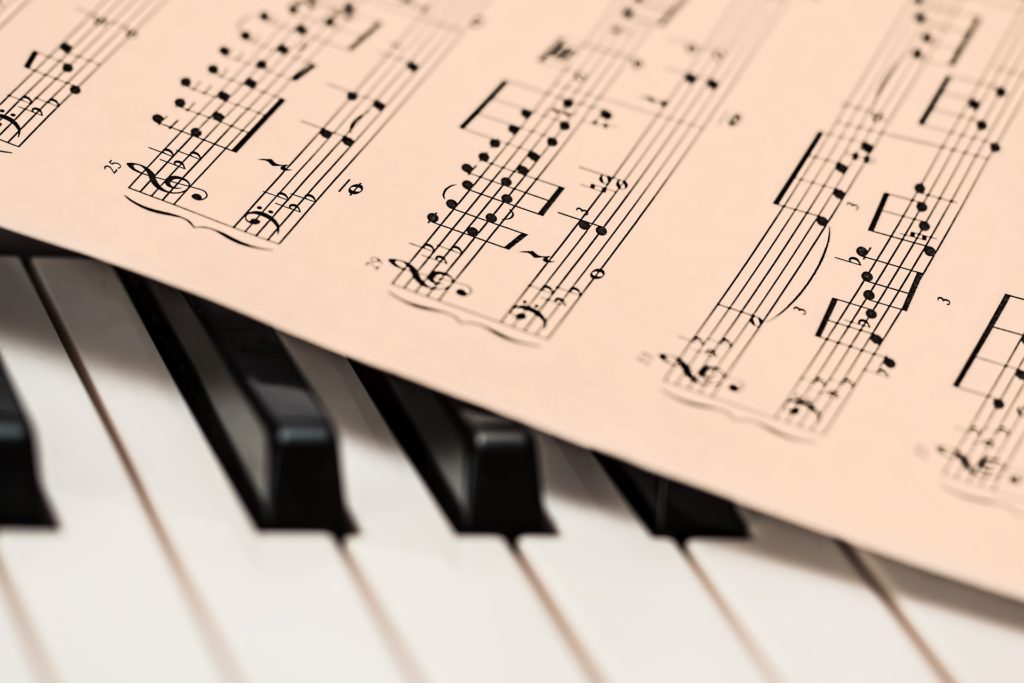Do you have a budding musician who loves to plunk out little melodies on the piano? Or perhaps your 4th grader just attended a music assembly at school and wants to play the clarinet! Maybe you never had the chance to play a musical instrument and decide to rectify this wrong by giving your child the chance to learn.

Regardless of what got you to this point, this post is intended to help you progress past the dreamy idea of music into the practical daily steps that actually produce results. I talk a lot about piano in the following paragraphs, but the same concepts apply to all musical instruments.
Do you have what it takes as a parent to help your child?
If you are reading this, chances are you do. It takes determination, discipline and encouragement from the parent! The student will need to also learn discipline, tenacity and a myriad of details that pertain to music. No worries though, these skills are developed a bit at a time. Phew! Developing these skills are some of the many benefits that evolve from learning to play an instrument. The benefits far outweigh the cost! Once you have learned to play an instrument, that understanding of music becomes a part of you! It is enriching in so many ways! Math becomes a bit easier to understand, expression and dynamics become a part of your vocabulary and experience. Most treasured of all, music becomes a beautiful aspect of your life.

If you want the short version of this entire post, on how to help your child learn a musical instrument it is this:
Practice!
Practice daily! Set up a schedule and do your best to stick to it! Your child needs to practice and you get the task to help your child be accountable. Not a pretty boiling down point, but accurate nonetheless! You can set up privileges and incentives for success at this daily task and consequences for shirking. Music must become a part of your lives in order to learn it. That’s the summary. If you want the long version—with some directions to make this doable–read away!

Learning a musical instrument is similar to acquiring other skills. It is comparable to learning to read for the first time or learning a second language. It takes practice. (Goodness that word again!) In fact when you are considering a teacher and which instrument to study, you may be asking if you can fit lessons into your family’s schedule. As a music teacher, I ask you to consider, will you fit daily practice into your family’s schedule? Because while I hope to wield some magic in the 30-45 minutes I have with your child, the real headway comes in the daily practice. Muscle memory is a real phenomenon and is only gained by the people who put in the daily effort.
Music teachers around the world have a few students come to them for private lessons every week having not practiced any measure of music since the last lesson! These are painful lessons for the student AND the teacher. Certainly something is accomplished in the lesson time, but without any effort over the course of 7 days, I believe a student actually regresses. This is due to the fact, the student is often unable to remember the concepts taught the week before, thus eliminating the effectiveness of last week’s lesson. Bummer for everyone! In other words a waste of money for parents, and time for student and teacher. Every student occasionally has a lesson like this, and that is to be expected. (Sickness, vacation and etc.) It is when these unprepared lessons start to accumulate, that parents and teachers take notice.

You may have started reading this thinking “Cute Caleb has a skill for the oboe should I get him lessons?” Yes, probably! Private lessons can really help a student soar! In addition I am asking you: Are you willing to help Caleb practice so that lessons actually yield skills and talents? Please know only a few students have the wherewithal to keep plodding along with the daily grind without a cheerleader in the form of a parent. “Yea! That music selection is really coming along, I can tell you have worked hard!” You get it. Positive reinforcement is powerful!
Get your game face on! This is not for the faint of heart. This is for determined parents or guardians who can balance discipline and fun! (Self esteem actually comes as a result of self discipline–cool topic to study). This is a daily wrestle. Are you willing to ask not only about homework, but also music practice? Let me reiterate–you CAN do this! If you have potty trained your child, then you have an inkling of what it takes. Luckily music lessons do not result in any messes on the carpet. Phew! So there’s that little perk! Remember each kiddo is different, let’s recognize that right now. Music will come differently to every student. Some will pick it up faster and some will struggle with many steps. Both journeys are okay! Both can learn to play and find the joy music brings and the jubilation of sharing that music. Sometimes the harder the acquisition, the sweeter the prize. (Yes, that should totally be a bumper sticker!) Let’s put that right here.

Now let’s move on to 3 simple methods for helping your child to learn this new talent. You may wish to use only one of these methods, or you could combine them. Think of what is best for your and your kiddo. You are the team here.
The Contract Method!
Depending on the age of your child and their enthusiasm and willingness to comply, you may consider a contract. This is a great way to enter into this arrangement with your kiddo, especially age 9 through teenage years. If you feel a conversation is enough for your child, great! However, a written contract of expectations for either side will help establish guidelines from the start! Also this does give the sense of teamwork, showing that both parent(s) and child will contribute to the success of this new venture. You might consider some of these elements.
- Student Agrees to:
- Practice 30 minutes a day (20, 40 or the agreed to time) — Maybe Sunday off or weekends? (You choose parameters together) Young beginning students may only be 10-15 minutes a day for the first 4-5 months while the songs are simple and the muscles are new to training.
- Prepare each musical piece for the following lesson, per the teacher.
- Take good care of the instrument. (i.e. wipe down after use, keep in protective case when not in use, do not use as a weapon–whatever instructions your individual child may need.) 🙂
- Work on Music Theory as well as scales, per teacher’s request.
- Keep an open dialogue if help is needed. (Deciding you don’t understand and waiting until the next lesson is not effective). Ask for help! Many teachers will answer a quick text about questions.
- Report progress and practice to parent. (Maybe play them a song!)
- Parent Agrees to:
- Pay for Lessons
- Drive Student to be on time for lessons
- Help keep instrument tuned (repairs, tuning or replacement reeds-clarinet, saxophone and the like)
- Come to recitals and cheer
- Hold back criticism
- Follow up about practice time and effort
You can pick and choose the specifications that would best work for the age, responsibility and disposition of your child. Posting this contract somewhere visible for the first few months may be helpful! (Refrigerator?)

The Chore Chart Method
This method works best if you have already been using chore charts in your home. If your children are acclimated to following personal responsibilities daily, then adding piano practice to the chart is natural. This is the method I have used with my own kids. I keep my chore charts in the kitchen and my kids know they must complete responsibility before play. Side Rant: I actually really want them to play every day (meaning recreation)! I think play is vital for a million reasons, we just do the work first, so play is always the incentive. (Rant over) Here is an example of a chore chart similar to one I’ve made for my kiddos. I usually personalize it with images of legos or hearts or stars whatever my kiddo loves. (please know none of my kiddos love trashcans or recycling, those are just bonus with this chart!)

Startling but true: In my house, when you are around 12 years old and we are paying for the more expensive lessons (because we have outgrown high school and beginner teachers) then my kids are required to play 4-5 hours a week in preparation for these lessons. If they do not, then they are responsible to pay for that week’s lesson. Currently at this writing those lessons are $35 for 30 minutes. We value the lessons, but must do our part to make them worth it. Usually paying once for the lesson is enough to motivate better practice the following week!
Please know I give space for sickness or a crazy week at school, but this extra space for abnormal sickness or stress at school is not the norm. My kiddos are not walking around with a surplus of $35 is their pocket, so to pay for their lessons will mean a lot of extra chores. They know this, so usually some diligence at the piano outweighs scrubbing showers. 🙂
The Practice Chart Method:
If the above ideas seem to complex or you don’t feel you could keep it up, then consider just this: A practice chart. Simple.
When my kids turn 11 or so, they have had their chore chart memorized for years. They do it and don’t check it off, the actions are simply a part of their routine. I have found that piano sometimes becomes the variable. It only takes 2 minutes to make a bed, but piano practice takes 30 minutes or more. Each of my 5 kids has been different on this. Some have simply just practiced, and some have been involved with sports or dance and hope their lack of practice goes unnoticed. By age 13 the chore chart seems juvenile to kids who have had one since they are 3, but there still needs to be a way to account for practice time.
Enter the practice chart! This once again needs to be a form that is somewhere it will be seen everyday. This will help child and parent to keep track of progress.

We are all familiar with the saying “attitude is everything.” Okay I’m here to back that up! I have taught hundreds of kiddos over the years to sing and a fair few to play the piano. This means I have also interacted with numerous parents on this same topic! The attitude of both student and parent is crucial for success! (And definitely teacher…read this for choosing a teacher)
Hopefully these idea get you on the right track. Perhaps you will choose a teacher with a system for charting practice. Remember learning an instrument is student AND parent propelled. You can accomplish this together. Music is such a gift. Just know it takes more than 30 minutes a week to pick up on these skills. 🙂 Good Luck! I’m exited for your journey.



